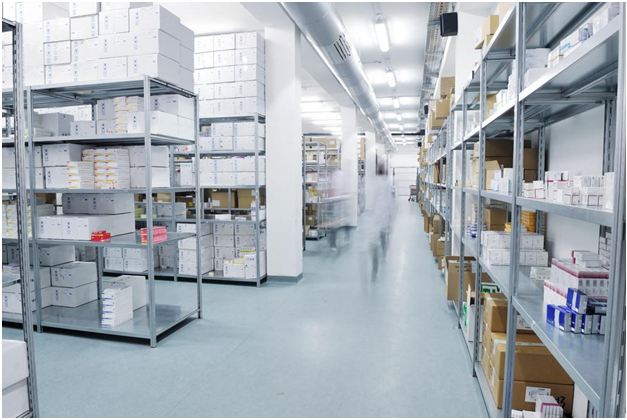
Modern warehouses are increasingly turning to automation to streamline daily business operations. Whether it’s using automated conveyors, robotic picking arms, or smart inventory systems, automation reduces human error and speeds up fulfillment. Automation also enhances safety by minimizing the need for employees to handle heavy or repetitive tasks manually.
According to GlobalNewsWire.com, the worldwide Automated Material Handling Equipment market is expected to grow from $33.3 billion in 2024 to $51 billion by 2029. This growth highlights the value businesses are placing on automation to improve warehouse efficiency and lower operating costs.
Optimize Layout and Space Utilization
Maximizing every square foot of your warehouse is essential for smooth operations. Poor layout planning can result in traffic jams, unnecessary travel time for workers, and storage limitations. Streamlined workflows and designated areas for receiving, storage, picking, and packing create better productivity.
The U.S. storage and warehouse leasing market reflects this growing focus on spatial efficiency. According to IBISWorld, this sector is projected to reach $36.6 billion in 2025, underscoring how companies are investing in better-designed storage solutions to support operational demands.
Improve Inventory Management Systems
A well-managed inventory system allows real-time tracking of stock levels, order statuses, and turnover rates. Outdated or inaccurate inventory records can lead to missed shipments or excess stock, both of which impact customer satisfaction and profit margins. Implementing barcode scanning or RFID technology helps ensure data accuracy.
Inventory management also plays a crucial role in reducing losses. By integrating technology-driven platforms, warehouses can ensure inventory counts remain up to date, minimizing the risk of shrinkage or obsolete stock consuming valuable space.
Streamline Packaging Processes
Packaging is a significant step in the warehousing cycle, and inefficiencies in this area can slow down the entire operation. Standardizing box sizes, using pre-labeled containers, and integrating packaging machines can help reduce packing time and material waste.
According to IBISWorld, the cardboard box and container manufacturing industry generated $83.7 billion in revenue in 2023. This figure reflects just how critical packaging is across industries, and efficient warehousing must align with smart packaging choices to optimize shipping, reduce costs, and improve turnaround time.
Invest in Workforce Training and Development
Even the most sophisticated systems won’t yield maximum efficiency without a well-trained team. Employees should be trained on proper material handling, software usage, safety protocols, and emergency procedures. Regular training ensures staff can adapt to technological updates and procedural improvements.
Involving workers in process improvement also empowers them and encourages accountability. Feedback from those on the ground often reveals bottlenecks or outdated processes that may not be obvious to management alone.
Adopt Just-In-Time (JIT) Principles
Just-In-Time (JIT) inventory methods allow companies to receive goods only when needed, minimizing on-site stock and reducing storage costs. This strategy requires precise coordination with suppliers and real-time data tracking to ensure that inventory levels are always optimal.
When executed correctly, JIT can boost warehouse efficiency by freeing up space and reducing excess stock. However, it’s vital to have contingency plans in place in case of supply chain disruptions, as JIT offers little room for error or delay.
Use Data Analytics for Informed Decision-Making
Modern warehouse management systems (WMS) often come equipped with analytics dashboards that track performance indicators like pick rate, fulfillment accuracy, and downtime. These insights allow managers to identify inefficiencies, forecast demand, and allocate resources more effectively.
Continuous monitoring of key metrics enables real-time improvements and long-term strategic planning. Whether it’s adjusting staff schedules based on order volume or reorganizing shelving to reduce travel time, data-driven decisions lead to better outcomes.
Prioritize Safety and Maintenance
Operational efficiency also depends on a safe and well-maintained work environment. Equipment breakdowns or workplace accidents can lead to costly downtime. Conducting routine maintenance checks and adhering to Occupational Safety and Health Administration (OSHA) standards helps ensure smooth operations.
Regular inspections, up-to-date equipment, and a culture of safety not only improve workflow continuity but also enhance employee morale and retention. An efficient warehouse is one where people feel safe, supported, and capable of doing their best work.
Enhancing your warehouse’s operational efficiency requires a blend of automation, smart layout planning, skilled labor, and real-time data. From investing in automated equipment to refining your packaging processes, each step contributes to a more streamlined and productive business facility. As industries grow and evolve, warehouse operations must keep pace by embracing innovation, efficiency, and adaptability at every level.

